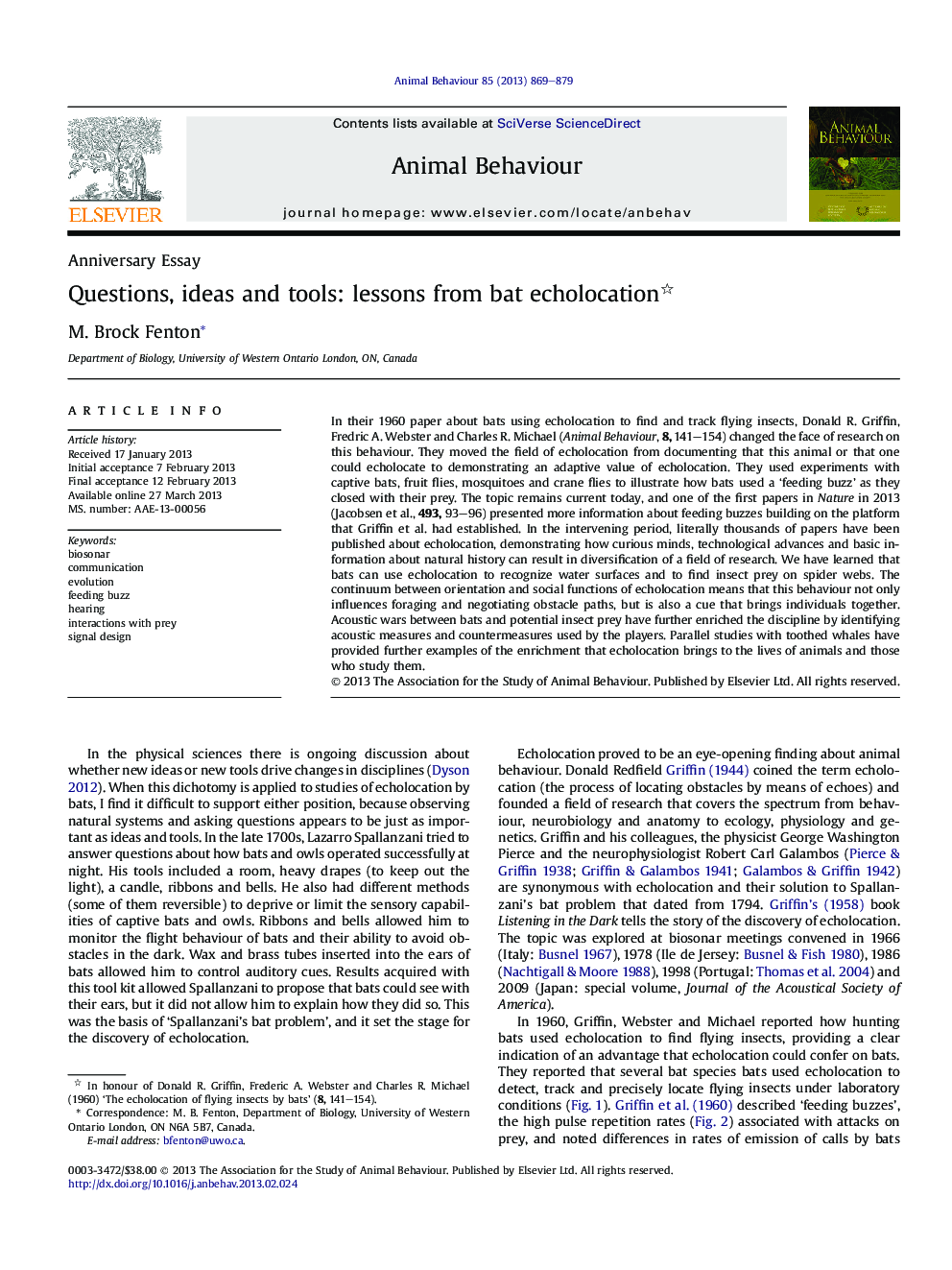| کد مقاله | کد نشریه | سال انتشار | مقاله انگلیسی | نسخه تمام متن |
|---|---|---|---|---|
| 2416554 | 1104281 | 2013 | 11 صفحه PDF | دانلود رایگان |

In their 1960 paper about bats using echolocation to find and track flying insects, Donald R. Griffin, Fredric A. Webster and Charles R. Michael (Animal Behaviour, 8, 141–154) changed the face of research on this behaviour. They moved the field of echolocation from documenting that this animal or that one could echolocate to demonstrating an adaptive value of echolocation. They used experiments with captive bats, fruit flies, mosquitoes and crane flies to illustrate how bats used a ‘feeding buzz’ as they closed with their prey. The topic remains current today, and one of the first papers in Nature in 2013 (Jacobsen et al., 493, 93–96) presented more information about feeding buzzes building on the platform that Griffin et al. had established. In the intervening period, literally thousands of papers have been published about echolocation, demonstrating how curious minds, technological advances and basic information about natural history can result in diversification of a field of research. We have learned that bats can use echolocation to recognize water surfaces and to find insect prey on spider webs. The continuum between orientation and social functions of echolocation means that this behaviour not only influences foraging and negotiating obstacle paths, but is also a cue that brings individuals together. Acoustic wars between bats and potential insect prey have further enriched the discipline by identifying acoustic measures and countermeasures used by the players. Parallel studies with toothed whales have provided further examples of the enrichment that echolocation brings to the lives of animals and those who study them.
► I discuss Griffin et al.'s (1960, Animal Behaviour, 8, 141–154) contribution to the development of echolocation research.
► The richness of the field reflects a combination of researchers' technical advances and the diversity of echolocators.
► Echolocation has had a pervasive influence on the lives and evolution of echolocators and their prey.
► We have gained much insight into the foraging, orientation and social behaviour of echolocators, but many questions remain.
Journal: Animal Behaviour - Volume 85, Issue 5, May 2013, Pages 869–879